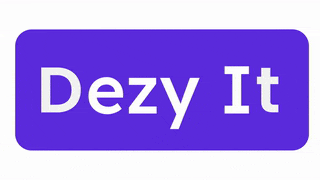Growth Hacking vs product-led growth: The sprint showdown for SaaS domination
- alekhya1
- Feb 21, 2024
- 2 min read
Updated: Feb 22, 2024
In the fast-paced realm of Software as a Service (SaaS), companies are constantly competing for the top spot, seeking innovative strategies to outpace their competitors. Two prominent approaches that have emerged as frontrunners in this race are Growth Hacking and Product-Led Growth. In this blog, we will delve into the distinctions between these strategies and explore how they contribute to the sprint for SaaS domination.

Understanding Growth Hacking
Growth Hacking is a term coined by entrepreneur Sean Ellis, referring to a set of unconventional marketing strategies aimed at rapid user acquisition and business growth. Growth hackers leverage data-driven decision-making, experimentation, and creativity to identify scalable and efficient ways to boost user numbers. Traditional marketing strategies often take a backseat as growth hackers focus on innovative techniques like viral marketing, A/B testing, and referral programs to propel their growth.
The Growth Hacking Advantage
One of the primary advantages of Growth Hacking is its ability to deliver quick wins. By prioritizing user acquisition and engagement through low-cost, high-impact tactics, companies can experience rapid growth in a short period. Growth hackers emphasize a data-centric approach, allowing them to iterate quickly based on user feedback and behavior, adapting strategies on the fly for optimal results.
Product-Led Growth Strategy
On the other side of the spectrum, Product-Led Growth (PLG) is a holistic approach that centers around the product itself as the primary driver of acquisition, conversion, and retention. PLG relies on delivering an exceptional user experience through self-serve onboarding, free trials, and in-app features that guide users seamlessly through the value journey. This strategy often positions the product as a key vehicle for growth, with the user becoming an advocate and catalyst for organic expansion.
The Product-Led Growth Advantage
Product-led growth focuses on creating value for users from the outset, fostering a customer-centric model. By allowing users to experience the product's value firsthand through free trials or freemium models, companies can build trust and loyalty. The virality inherent in a product-led approach is driven by users who naturally share their positive experiences with others, leading to organic growth.
The Sprint Showdown
While Growth Hacking and Product-Led Growth may seem like opposing forces, they are not mutually exclusive. Many successful SaaS companies integrate elements of both strategies to achieve a balanced approach. The sprint for SaaS domination requires a nuanced understanding of when and how to apply each strategy.
In the Growth Hacking corner, companies can leverage quick, data-driven wins to rapidly scale their user base. Meanwhile, in the Product-Led Growth corner, the focus is on building a sustainable data-driven growth engine through exceptional product experiences.

Conclusion:
In the sprint for SaaS domination, Growth Hacking and Product-Led Growth stand as two formidable contenders. The choice between them ultimately depends on the unique characteristics of the product, the target audience, and the growth goals of the company.
As the SaaS landscape continues to evolve, the integration of both strategies may become the winning formula, ensuring a balance between rapid acquisition and long-term user satisfaction. The key is to adapt and iterate, staying agile in the pursuit of sustainable growth in the highly competitive world of SaaS.
Tired of slow SaaS growth?
Ignite your success with the Dezy It Free trial!

